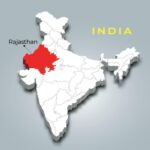Punjab: 7 Key Insights Into Its Rich History, Daily Life, and Cultural Significance
Introduction
Punjab, a region that lies in the north-western part of India, is known for its rich history, vibrant culture, and significant impact on the country’s social, economic, and political fabric. The state has been a witness to numerous historical events that shaped its identity, and its culture continues to influence the broader Indian society today. In this article, we will explore the history, daily life impacts, and cultural significance of Punjab, shedding light on the daily lives of its people, their traditions, and their role in shaping modern India.
History
It has a long and diverse history, marked by the rise and fall of several powerful empires, including the Indus Valley Civilization, which was one of the world’s earliest urban cultures. The region was historically a center of agriculture and trade, benefiting from the fertile plains created by the Indus River.
In the medieval period, Punjab became a crucial site of power struggles between various empires, including the Mughal Empire and regional kingdoms. However, the region is perhaps most famously associated with the Sikh Empire, founded by Maharaja Ranjit Singh in the early 19th century, which left an indelible mark on Punjab’s culture, politics, and social life.
The partition of India in 1947 was a turning point in Punjab’s history. The region was divided between India and Pakistan, resulting in significant demographic changes and the displacement of millions of people. Despite these challenges, Punjab continued to rebuild itself and emerge as one of India’s most prosperous states, particularly in agriculture.
Daily Life Impacts
It is known for its lively culture and warm hospitality, where people are always ready to help and share. The daily lives of the people of Punjab revolve around family, community, and agriculture. Here are a few key impacts of daily life in Punjab:
- Agriculture as the Backbone of Economy: It is often referred to as the “Granary of India” due to its vast agricultural lands. Farming, especially the cultivation of wheat, rice, and sugarcane, is a significant part of daily life. The state’s farmers are known for their hardworking nature, and the agriculture sector continues to be a major source of employment.
- Religious and Cultural Practices: It is home to people of various faiths, but it is most famously associated with Sikhism. The Golden Temple in Amritsar is one of the holiest places for Sikhs and attracts millions of pilgrims every year. Sikh values such as selflessness, service to humanity, and community are deeply embedded in daily life, with Gurdwaras (Sikh temples) playing a central role in providing social services like langar (community kitchen).
- Music and Dance: The vibrant culture of Punjab is further reflected in its traditional music and dance forms. The Bhangra and Gidda are popular dances that are performed during festivals, weddings, and other social gatherings. These dances, accompanied by lively music, are an expression of joy and celebration, forming an essential part of the daily rhythm of life.
- Cuisine: The food of Punjab is rich, hearty, and full of flavor. Famous dishes like butter chicken, sarson da saag, and makki di roti are enjoyed in every household. The food culture is deeply intertwined with the region’s agricultural background, with much of the produce coming from the land.
- Festivals: Festivals like Baisakhi, Diwali, Lohri, and Gurpurabs (Sikh festivals) are celebrated with great enthusiasm. These festivals not only mark important religious or agricultural milestones but also bring communities together, reinforcing a sense of unity.
Key Facts
- Capital: The capital of Punjab is Chandigarh, which is a planned city and also serves as the capital for the neighboring state of Haryana.
- Major Cities: Amritsar, home to the Golden Temple, is one of the most significant cities in Punjab. Other important cities include Ludhiana, Jalandhar, Patiala, and Bathinda.
- Language: The official language of Punjab is Punjabi, written in the Gurmukhi script. Hindi and English are also widely spoken.
- Economy: Punjab’s economy is largely based on agriculture, with the state being a major producer of wheat and rice. The state also has a significant industrial sector, including textiles, sports goods, and electronics.
- Population: As of the 2021 census, Punjab’s population is approximately 30 million people. It is one of India’s smaller states in terms of area but is densely populated due to its fertile land.
Significance
- Historical Significance: It’s strategic location has made it a site of several significant historical events. It has seen the rise and fall of empires, including the Mauryas, Mughals, and Sikhs, each of which left a lasting impact on the region’s culture and heritage.
- Cultural Significance: It is the birthplace of Sikhism, one of the world’s major religions. The teachings of Guru Nanak, the first Sikh Guru, emphasize equality, social justice, and devotion to God. These values continue to influence the way of life in Punjab and across the world.
- Political Significance: It has played a crucial role in shaping India’s modern political landscape. The state has been a center for both separatist movements and national integration, making it a focal point in the history of post-independence India.
- Economic Impact: The Green Revolution in the 1960s, which began in Punjab, transformed the state into an agricultural powerhouse. Its success in increasing food production helped India achieve food self-sufficiency and contributed to the country’s overall economic growth.
- Social Welfare: It has made significant strides in education, healthcare, and poverty alleviation. The state has one of the highest literacy rates in India and continues to focus on improving the standard of living for its citizens.
Observance of Key Events and Festivals
It’s vibrant culture is celebrated throughout the year, with various festivals and events marking significant occasions. Some of the most widely observed festivals include:
- Baisakhi: Celebrated in April, Baisakhi marks the harvest season and the formation of the Khalsa Panth. It holds religious and cultural significance, especially for Sikhs.
- Diwali: The festival of lights is widely celebrated in Punjab, with families lighting diyas (small oil lamps), bursting crackers, and sharing sweets. Diwali marks the return of Lord Rama to Ayodhya.
- Lohri: A winter festival celebrated in January, Lohri marks the end of the winter solstice and the beginning of the harvest season. People gather around bonfires, sing traditional songs, and enjoy foods like til (sesame seeds) and gajak.
- Gurpurabs: These are special observances in honor of the Sikh Gurus, particularly Guru Nanak’s birthday, celebrated with prayers, processions, and feasts at Gurdwaras.
Wishing for the Future
It has come a long way in its journey of development and social progress. The state’s future lies in its ability to balance modernization with the preservation of its rich cultural heritage. By focusing on economic diversification, improving infrastructure, and promoting sustainability, Punjab can continue to thrive as a vital contributor to India’s growth.
As we look ahead, it’s crucial to support Punjab’s agricultural roots, while also fostering growth in sectors such as manufacturing, services, and technology. The youth of Punjab, with their inherent spirit of hard work and determination, will undoubtedly play a pivotal role in shaping the state’s future.
FAQs
- What is the capital of Punjab? The capital of Punjab is Chandigarh, a city known for its modern architecture and planning.
- What is the primary language spoken in Punjab? It is the primary language spoken in Punjab, although Hindi and English are also widely understood.
- What are the major industries in Punjab? It is primarily known for agriculture, particularly the cultivation of wheat and rice, but it also has industries in textiles, sports goods, and electronics.
- Why is Punjab known as the “Granary of India”? It is called the “Granary of India” because of its vast agricultural production, especially in wheat and rice, which contribute significantly to India’s food security.
- What are the famous festivals in Punjab? Some of the most famous festivals in Punjab include Baisakhi, Diwali, Lohri, and Gurpurabs.
Conclusion
Punjab, with its rich history, vibrant culture, and deep-rooted traditions, has had a profound influence on India’s development and society. The state’s commitment to agriculture, community service, and cultural heritage continues to shape the daily lives of its people. As we look to the future, Punjab’s journey of progress and prosperity will remain central to India’s success as a nation.










